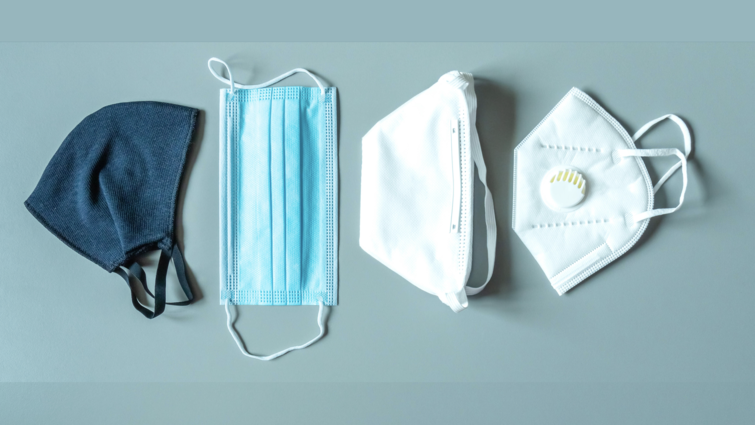Vaccinations for COVID-19 have begun – but until and unless everyone in the world gets vaccinated, we’d need to wear masks. Unfortunately, not enough people take this seriously so they don’t wear masks or wear the wrong kind of masks which are not effective at all.
Here, we bring you the comprehensive guide to every type of COVID mask, and explain how effective they are:
N95-type masks

N95 masks can trap 95% of the particles the size of 0.3 microns – thanks to their internal fibers that contain an electrical charge.
N95 masks are the most effective of all masks commonly available – so much that doctors say that the entire pandemic can be stopped within just one month if everyone was wearing an N95 mask. But unfortunately, the masks are not available for everyone due to a shortage in production. So N95 masks are usually reserved for healthcare professionals.
There are other superior masks such as N99, N100, R95, R99, R100, P95, P99 and P100 – but they are highly expensive, not easily available, and people need training to be able to wear them.
Surgical-grade masks

Surgical masks are usually designed to block large-particle droplets, splashes, sprays, or splatter that may contain germs (viruses and bacteria), keeping it from reaching your mouth and nose. So they may not block the small particles of virus that might float in the air after an infected person coughs or sneezes.
They are effective to some extent but might lose their usefulness when coming in close contact with an infected person or going into a crowd.
Homemade cloth masks

This is the type of mask that most people are using – although their effectiveness is limited to be around 25%. You can increase their effectiveness if you choose the right kind of fabric and the appropriate number of layers.
Doctors suggest using multiple layers of fabrics with higher thread counts to make your mask effective against small particles and viruses.
Silk is regarded as the most useful fabric to be used in such masks due to its high breathability and ability to block small particles.
Face shields, bandanas, gaiters, ski masks, and scarves

These are not effective at all, and should not be worn as a protection gear against any kind of airborne virus or even pollutants. Some of these items actually increase the risk of infection since the microbes can easily fester in the warmth and moisture of the fabrics so close to the mouth.
Featured Image Courtesy: Healthline

